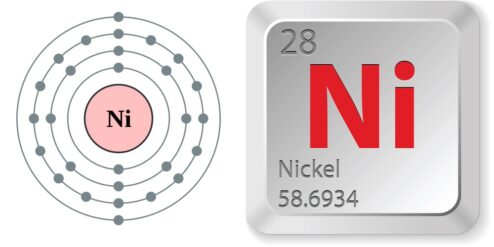Introduzione: Nickel is a naturally occurring metal that is commonly used in various industries. However, it is also a common allergen, with some people experiencing allergic reactions when they come into contact with it. This can also extend to the foods we eat, as certain foods are known to contain high levels of nickel. In this article, we will explore which foods should be avoided if you have a nickel allergy, how cooking methods can affect nickel content, and strategies for maintaining a low-nickel diet.
Understanding Nickel Allergy: An Overview
Nickel allergy is a common cause of allergic contact dermatitis, an itchy rash that appears when your skin touches a substance containing nickel. Symptoms of nickel allergy can vary from mild to severe, and can include redness, itching, swelling, and in severe cases, blisters and hives. Nickel allergy is often associated with earrings and other jewelry for the body. However, nickel is also present in many everyday items, such as coins, zippers, cell phones and eyeglass frames. It can also be found in certain foods and drinks.
The Connection Between Nickel and Diet
The connection between nickel and diet is significant, especially for those with nickel allergy. Ingesting nickel through food can exacerbate symptoms in those who are sensitive. It’s important to note that nickel is not harmful to the general population, and in fact, it is an essential trace element necessary for the body’s normal metabolic functions. However, for those with nickel allergy, consuming foods high in nickel can trigger or worsen symptoms.
Common Foods High in Nickel to Avoid
There are several foods known to have high nickel content. These include whole grains, legumes, nuts, and seeds, as well as certain types of fish and shellfish. Chocolate and tea are also known to contain high amounts of nickel. Vegetables such as spinach, lettuce, and onions, and fruits like pineapples and raspberries are also high in nickel. Additionally, canned and processed foods often contain higher amounts of nickel due to the canning process.
Impact of Cooking Methods on Nickel Content
The way food is prepared can also impact its nickel content. Cooking foods in nickel-plated utensils can increase the nickel content of the food. Similarly, processing or refining foods can also increase their nickel content. For example, whole wheat has more nickel than refined flour because the nickel is concentrated in the outer layer of the grain. Therefore, choosing refined grains over whole grains can help reduce nickel intake.
Strategies for a Low-Nickel Diet
If you have a nickel allergy, it’s important to develop strategies for a low-nickel diet. This can include avoiding foods high in nickel, as well as being mindful of cooking methods. Using stainless steel or glass cookware instead of nickel-plated utensils can help. Additionally, eating a varied diet can help ensure that you’re not consuming too much nickel from any one source. It’s also important to drink plenty of water to help your body excrete any excess nickel.
Monitoring Your Health: Signs of Nickel Overexposure
Monitoring your health for signs of nickel overexposure is crucial if you have a nickel allergy. Symptoms can include chronic fatigue, insomnia, headaches, and in severe cases, kidney damage. If you suspect you’re experiencing symptoms of nickel overexposure, it’s important to seek medical attention. A doctor can perform tests to confirm a diagnosis and provide guidance on how to manage your symptoms.
Conclusioni: In conclusion, managing a nickel allergy requires careful attention to both diet and lifestyle. Avoiding high-nickel foods and being mindful of cooking methods can help reduce symptoms. It’s also important to monitor your health for signs of overexposure and to seek medical attention if necessary. With careful management, it’s possible to live a healthy and symptom-free life with a nickel allergy.
Per approfondire:
- Nickel Allergy – Mayo Clinic: This link provides a comprehensive overview of nickel allergy, its symptoms, causes, and treatments.
- Nickel in the Diet – DermNet NZ: This resource offers detailed information about the presence of nickel in various foods and provides guidance for a low-nickel diet.
- Nickel Allergy – American Osteopathic College of Dermatology (AOCD): This link provides an in-depth look at nickel allergy, including its causes, symptoms, and treatment options.
- Nickel Allergy – American Academy of Dermatology Association: This resource provides a comprehensive overview of nickel allergy, including how to avoid exposure and manage symptoms.
- Dietary Nickel as a Cause of Systemic Contact Dermatitis – Journal of Clinical and Aesthetic Dermatology: This scientific article explores the connection between dietary nickel and systemic contact dermatitis.


